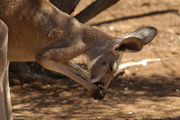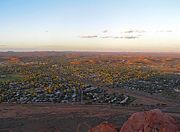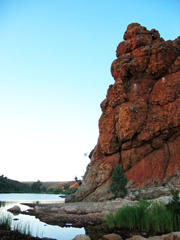
Alicesprings Hostels

Alice Springs is the heart of Central Australia is comprised of cavernous gorges, boundless desert landscapes, remote Aboriginal communities and a charming pioneering history. It embodies the hardy outback of the Northern Territory's Red Centre, and is a travel hub for sights and hikes in the region, such as Uluru (formerly known as Ayers Rock), Kata Tjuta (formerly known as the Olgas) and Kings Canyon. Since the start of the tourist boom in the early eighties, the population has substantially grown to about 24,000. Water is a scarce commodity in the region, and so restrictions are common. It is a great town and well worth a visit!
The Arrernte Aboriginal people have made their home in the Central Australian desert in and around Alice Springs for more than 50,000 years. The Aboriginal name for Alice Springs is Mparntwe. Three major groups Western, Eastern and Central Arrernte people live in Central Australia, their traditional land including the area of Alice Springs and East/West MacDonnell Ranges. They are also referred to as Aranda, Arrarnta, Arunta, and other similar spellings.
Arrernte country is rich with mountain ranges, waterholes, and gorges; as a result the Arrernte people set aside 'conservation areas' in which various species are protected. According to the Arrernte traditional stories, in the desert surrounding Alice Springs, the landscape was shaped by caterpillars, wild dogs, travelling boys, two sisters, euros, and other ancestral figures.

There are many sites of traditional importance in and around Alice Springs, such as Anthwerrke (Emily Gap), Akeyulerre (Billy Goat Hill), Ntaripe (Heavitree Gap), Atnelkentyarliweke (Anzac Hill), and Alhekulyele (Mt. Gillen). Many Arrernte people also live in communities outside of Alice Springs.
In 1862, John McDouall Stuart led an expedition into Central Australia and the area where Alice Springs is located. Until the 1930s, however, the town was known as Stuart. The Overland Telegraph Line linking Adelaide to Darwin and Great Britain was completed in 1872. It traced Stuart’s route and opened up the interior for permanent settlement. It wasn’t until alluvial gold was discovered at Arltunga, 100 km east of Alice Springs, in 1887 that any significant settlement occurred.

The telegraph station was sited near what was thought to be a permanent waterhole in the normally dry Todd River and was optimistically named Alice Springs after the wife of the former Postmaster General of South Australia, Sir Charles Todd. The Todd River was named after Sir Charles himself. The original mode of transportation in the outback were camel trains, operated by immigrants from Pathan tribes in the North-West frontier of the then British India and Pakistan who were misnamed ‘Afghan’ Camellers.